
Fruits
California is a hotspot for many different agricultural exports. Whether that’s through the fertile soil of the Central Valley, or the region’s Mediterranean climate with hot, dry summers and cool, wet winters, California is a great place to grow crops, including fruits. California is one of the largest exporters of fruit, with some of the largest crops including:
- Grapes
- Strawberries
- Tomatoes
- Citrus (Tangerine, Oranges, & Lemons)
- Peaches
Per the United States Department of Agriculture (USDA), these fruits have all produced at least $500 million dollars through exports in 2024. With fruit being a lucrative business to the state of California, Sac Ag takes pride in providing specialty fertilizers to ag retailers and distributors to maximize both your customers’ crop production, as well as your bottom line.
Looking for other high quality raw materials to help increase plant health, growth, and yield?
We offer a portfolio of innovative products including other sulfur fertilizer additions and low salt fertilizers that help maximize the efficiency and output of your growing season. Our experts will work with you to find the optimum combination of nutrients to give you the best results for your harvest.
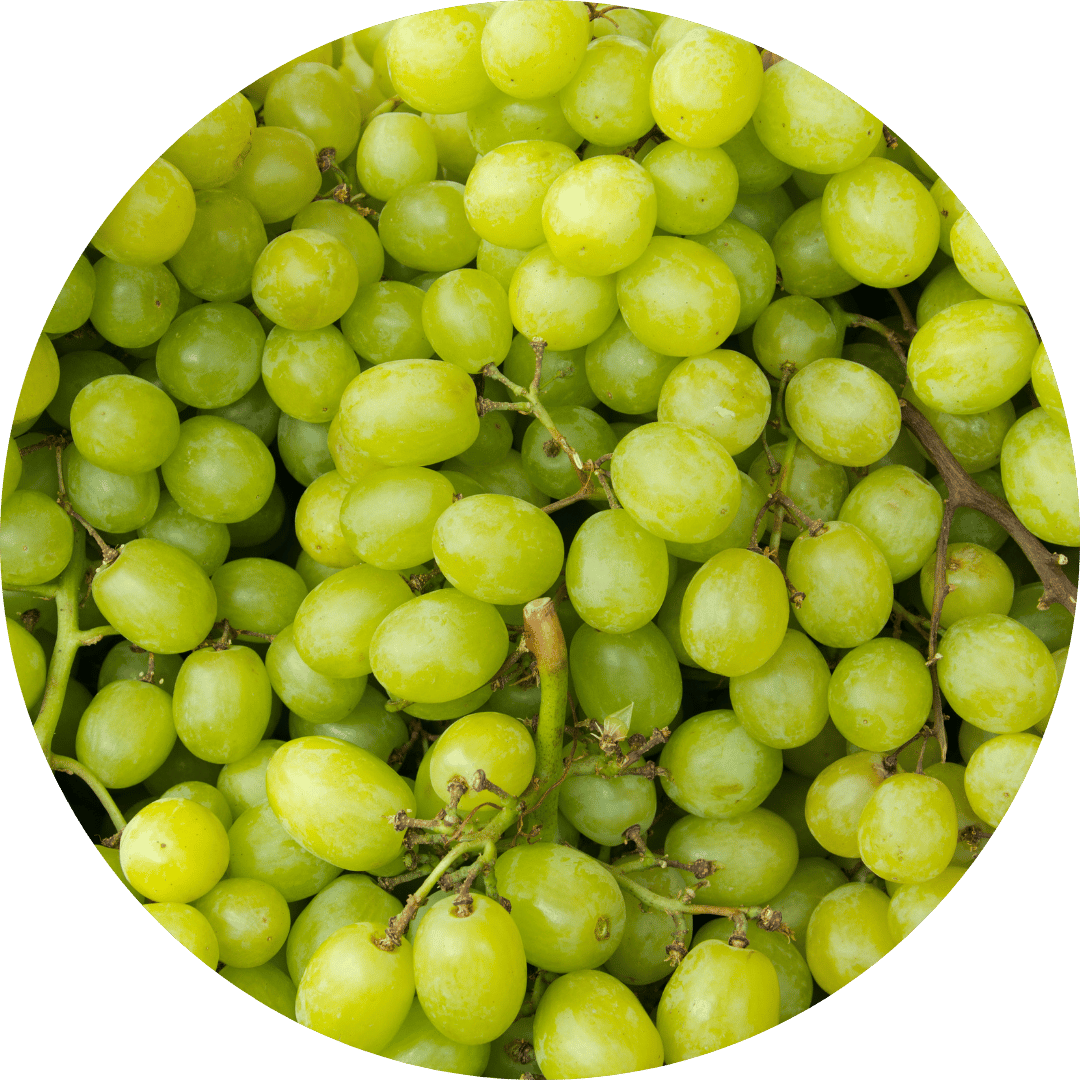
Grapes (Vitis vinifera)
Grapes are the biggest fruit export of California with a crop value of over 2.5 billion in 2024 according to Grapes from California. The region’s unique climate makes the ideal growing conditions for grape production. Grapes flourish in the summers with the hot and dry climate promoting a longer growing season, as well as day and night temperature fluctuations. Grapes have many uses, some include:
- Snacking
- Salads
- Desserts
- Wine
Grapes have many health benefits, some including:
- Good source of potassium
- Contains fiber
- Contains vitamin C
Production Challenges
- Climate variability: Weather events like wild fires, frost, hail, and extreme heat can affect grapes by affecting the fruit quality, sugar content, and crop yield.
- Pests: Common threats include grapevine moths, leafhoppers, mealybugs, grape phylloxera (root louse), and sharpshooters (which spread Pierce’s disease).
- Droughts & water scarcity: California regularly experiences droughts, and growers face restrictions on water use which can impact production.
- Magnesium Deficiency: Low magnesium levels lead to poor photosynthesis, reduced vine vigor, and lower fruit quality, ultimately decreasing yield and profitability. The issue is often exacerbated by high potassium soils or irrigation practices that limit magnesium uptake. Sac Ag’s MTS=™ fertilizer provides grape plants with the magnesium and sulfur these plants require for the best growth possible.
Strawberries (Fragaria × ananassa)
Strawberries are the state’s second largest fruit export, with California producing 85-90% of the United States strawberry production per the International Journal of Fruit Science. California is a hotspot for strawberries due largely to its climate. California’s warm summers and cool winters make it an ideal region to grow strawberries. This climate also allows for strawberries to have an extended growing season. Some of the many uses of strawberries include:
- Desserts
- Snacking
- Jams & Jellies
- Salads
Strawberries also have great health benefits, some including:
- Rich in vitamin C
- Help regulate blood sugar
- The anthocyanins in strawberries may reduce risk of heart disease
Production Challenges
- Pests: Many different pests like the lygus bugs, spider mites, thrips, and aphids can damage both the plant and the fruit.
- Pesticide resistance: Overreliance on certain pesticides has led to resistant pest populations, which may reduce the effectiveness of certain control strategies.
- Sensitivity to harsh weather conditions: Unpredictable rainfall, heatwaves, and frost events can affect flowering, fruit set, and harvest timing.
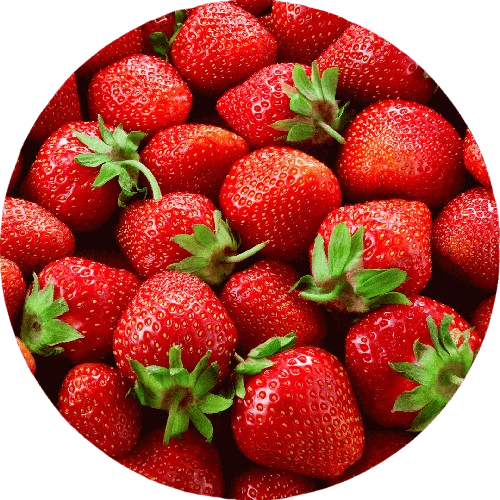
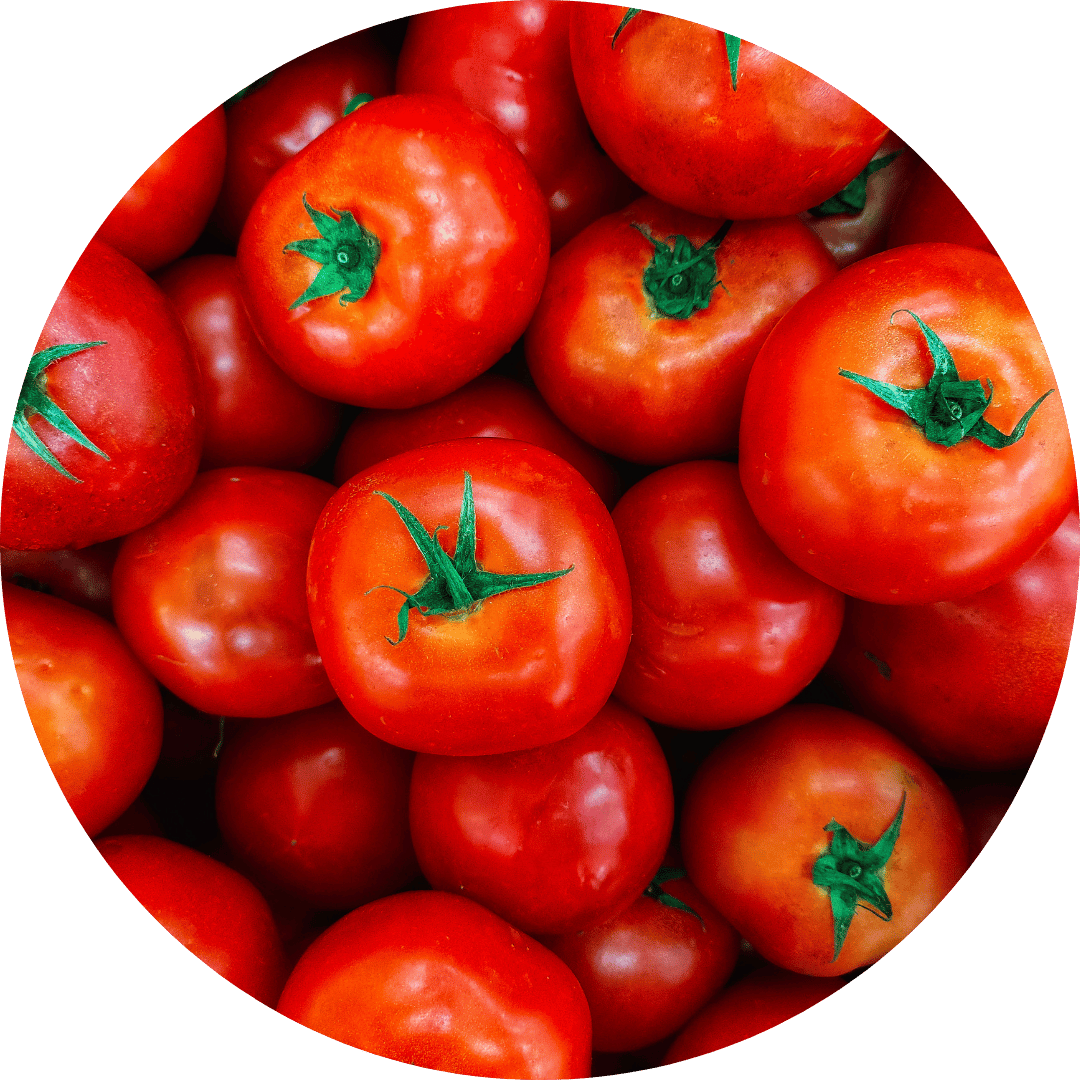
Tomatoes (Solanum lycopersicum)
While commonly considered a vegetable for its savory taste, tomatoes are actually considered a fruit. Tomatoes are California’s third largest fruit export, with a crop value of $2.01 billion in 2023 per the California Department of Food and Agriculture. California is a great climate for tomato growth, as tomatoes grow best in warm days and cool nights, allowing them to to ripen more evenly and develop a richer flavor.
Tomatoes can be used for:
- Sauces
- Salads
- Soups & stews
- Drinks
Some health benefits of tomatoes include:
- Contain potassium and lycopene
- Contains vitamin C & A
- Contains fiber
Production Challenges
- Droughts & water scarcity: California regularly experiences droughts, and growers face restrictions on water use, which can impact production.
- Pests: Common threats include tomato hornworms, whiteflies, thrips, aphids, tomato pinworms, flea beetles, and cutworms.
- Soilborne diseases: Key issues include Fusarium wilt (races 1–3), Verticillium wilt, Southern blight (Sclerotium rolfsii), corky root rot, bacterial wilt, and root-knot nematodes. These pathogens can persist in soil for years, making crop rotation, resistant varieties, and fumigation essential.
Citrus fruits (Rutaceae)
California grows many different citrus fruits, with some of the largest citrus exports being oranges, tangerines, and lemons. According to the USDA, these three fruits have produced over $2.4 billion in 2024. Citrus trees can flourish in areas like Tulare, Kern, and Fresno counties in the southern part of California’s Central Valley. These areas have a unique combination of attributes that are especially well-suited for citrus growers. A longer, hotter growing season and topography that features sandy and loamy soil has produced a well-developed infrastructure. Some uses for citrus fruits include:
- Adding acidity and tanginess to dishes
- Desserts
- Cocktails
- Zesting
Some health benefits of citrus fruits include:
- Rich in vitamin C
- Good source of fiber
- Contains potassium, thiamin, and folate
Production Challenges
- Pests: Common threats include Asian citrus psyllid (ACP)—the vector of Huanglongbing (citrus greening disease)—as well as citrus thrips, red scale, and glassy-winged sharpshooter. These pests damage fruit and foliage, reduce yield and quality, and require intensive monitoring and control.
- Droughts & water scarcity: California regularly experiences droughts, and growers face restrictions on water use, which can impact production.
- Climate variability: California’s unpredictable freezes, heatwaves, and windstorms can affect flowering, fruit set, and harvest timing.
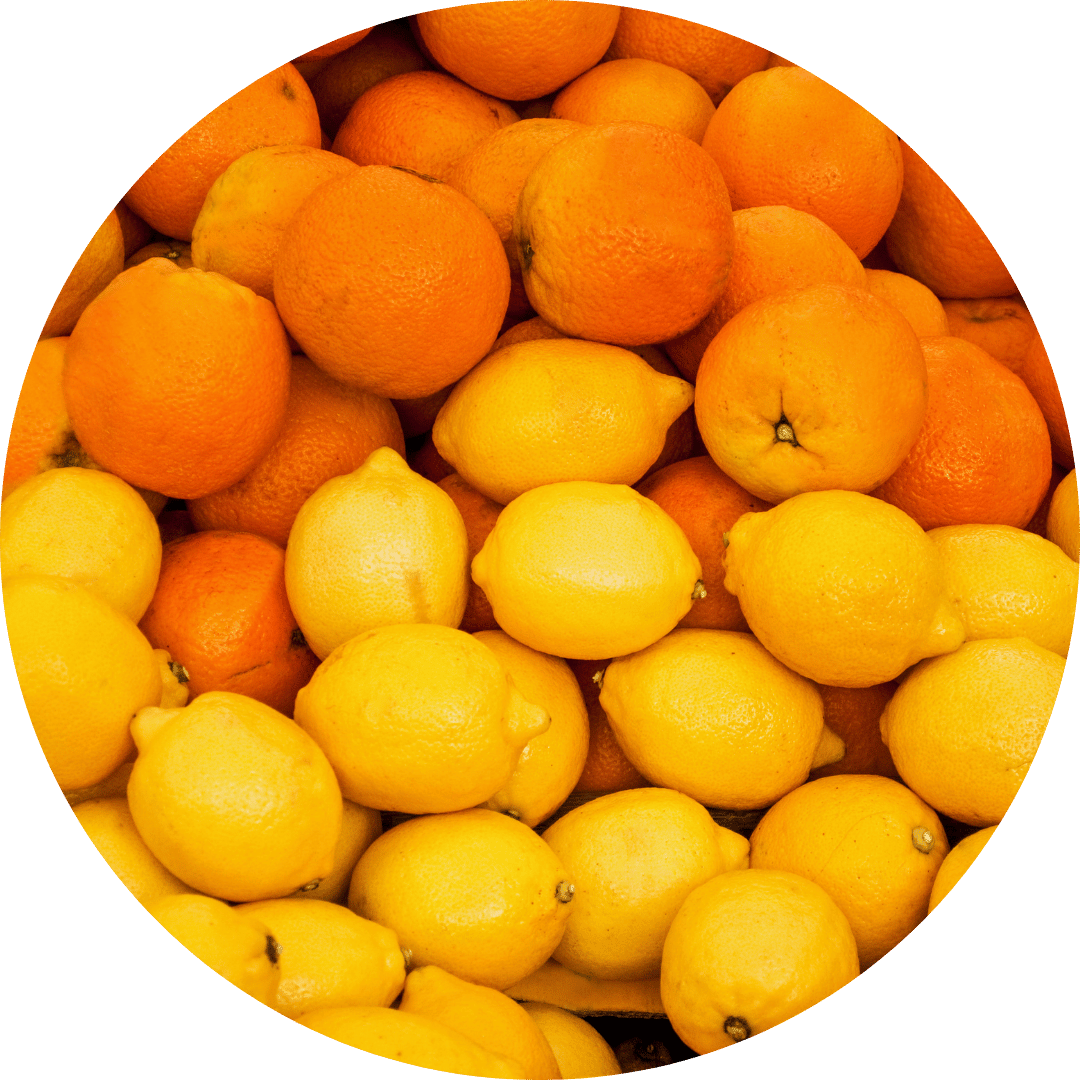
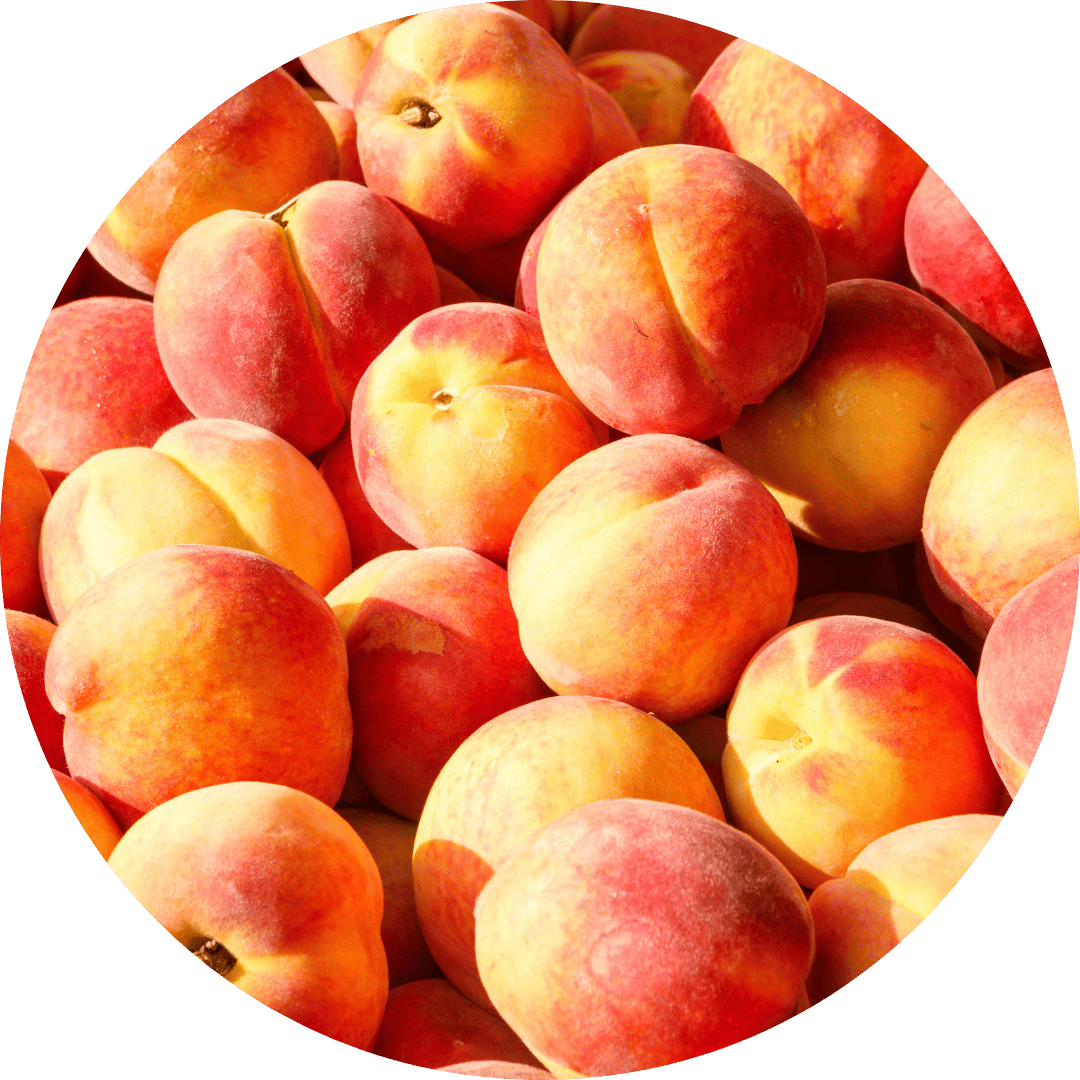
Peaches (Prunus persica)
Peaches are one of California’s largest produced fruit, growing more per year than Georgia! In 2022, California’s harvest yielded 475,000 tons of fruit, with Georgia only yielding 24,800 tons according to the USDA. California has an ideal climate for peach growth, as well as extensive acreage in comparison to Georgia. Some uses for peaches include:
- Desserts (pies, ice cream, cobbler)
- Jams & jellies
- Pairs well with grilled meats and fish
- Smoothies
Some health benefits of peaches include:
- Contains fiber
- Contains vitamin C
- Packed with antioxidants like carotenoids and polyphenols
Production Challenges
- Climate variability: California’s unpredictable rainfalls, heatwaves, and frost events can affect flowering, fruit set, and harvest timing. Peaches also require chill hours to fully set. Warmer winters can impact this, reducing flowering and fruit setting.
- Droughts & water scarcity: California regularly experiences droughts, and growers face restrictions on water use, which can impact production.
- Pests: Common threats include peach twig borer, oriental fruit moth, San Jose scale, stink bugs, thrips, and aphids. These pests can damage fruit, shoots, and foliage, affecting both yield and marketability.
Fruit Fertilizers
Sac Ag supports a diverse range of agricultural crops through high-quality, locally manufactured fertilizers for agriculture retailers and distributors. We have formulated chemicals that boost plant health, improve crop yield, and provide essential nutrients to support your growers’ fruit production:
Potassium Thiosulfate: Thio 25-17™ is a high-quality potash and sulfur liquid fertilizer
Ammonium Thiosulfate: ATS=™ is a high-quality nitrogen and sulfur liquid fertilizer.
Magnesium Thiosulfate: MTS=™ is a versatile fertilizer used in agriculture as a source of magnesium and sulfur.
Fruit Nutrients
Fruits require an assortment of different nutrients, some of which includes:
- Nitrogen: Promotes leaf and stem growth
- Potassium: Enhances fruit quality, size, and flavor
- Phosphorus: Crucial nutrient for root development, flowering, and fruiting
- Calcium: Strengthens cell walls, improving fruit firmness
- Boron: Essential nutrient for flowering, and setting fruit
- Zinc: important for growth regulation
Sac Ag's thiosulfate-focused product line promotes fruit growth and helps increase crop yields.
Get in touch with the Sac Ag team to discuss your fruit nutrient needs and secure your tons for the season:
